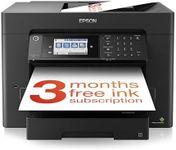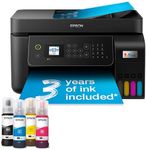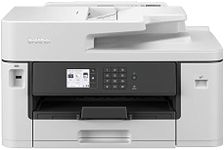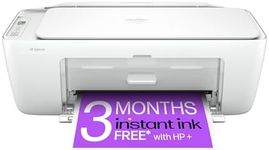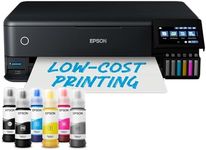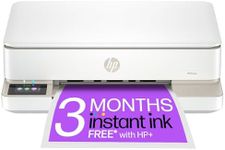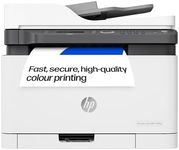Buying Guide for the Best Home Printer Scanners
Choosing the right home printer-scanner can greatly enhance your productivity and convenience. The key is to understand your specific needs, such as the volume of printing, the type of documents you handle, and any additional features you might require. By focusing on the key specifications, you can find a model that fits your lifestyle and work habits perfectly.Print TechnologyPrint technology refers to the method a printer uses to produce text and images on paper. The most common types are inkjet and laser. Inkjet printers are versatile and can handle a variety of media types, making them ideal for printing photos and color documents. Laser printers, on the other hand, are known for their speed and efficiency, especially for high-volume black-and-white printing. If you print a lot of documents, a laser printer might be more cost-effective in the long run, while an inkjet is better for occasional use and color printing.
Print SpeedPrint speed is measured in pages per minute (PPM) and indicates how fast a printer can produce documents. This is important if you need to print large volumes quickly. Printers with higher PPM are suitable for busy environments where time is of the essence. For home use, a moderate speed is usually sufficient unless you frequently print large documents or need quick turnaround times.
Print ResolutionPrint resolution, measured in dots per inch (DPI), determines the quality of the printed output. Higher DPI means more detail and sharper images, which is crucial for photo printing or detailed graphics. For general document printing, a lower DPI is often adequate. Consider your primary use: if you need high-quality images, opt for a higher DPI; for text documents, a standard resolution will suffice.
Scanner ResolutionScanner resolution, also measured in DPI, affects the clarity and detail of scanned documents and images. Higher resolution is important for scanning photos or documents where detail is critical. If you mostly scan text documents, a lower resolution will be sufficient. Choose a scanner resolution based on the type of documents you plan to digitize most frequently.
Connectivity OptionsConnectivity options determine how you can connect your printer-scanner to your devices. Common options include USB, Wi-Fi, and Bluetooth. Wi-Fi connectivity allows for wireless printing from multiple devices, which is convenient for households with several users. USB connections are reliable for direct connections to a single computer. Consider your home setup and how you prefer to connect your devices when choosing connectivity options.
Duplex PrintingDuplex printing refers to the ability of a printer to print on both sides of a sheet of paper automatically. This feature is important for saving paper and reducing printing costs. If you frequently print double-sided documents, such as reports or booklets, a printer with automatic duplexing will be very beneficial. For occasional use, manual duplexing might be sufficient.
Paper HandlingPaper handling capabilities include the types and sizes of paper a printer can accommodate, as well as the capacity of its paper tray. This is important if you need to print on different media types, such as envelopes, labels, or photo paper. A larger paper tray is useful for high-volume printing, reducing the need for frequent refills. Consider the types of documents you print most often and choose a printer that can handle those requirements.
